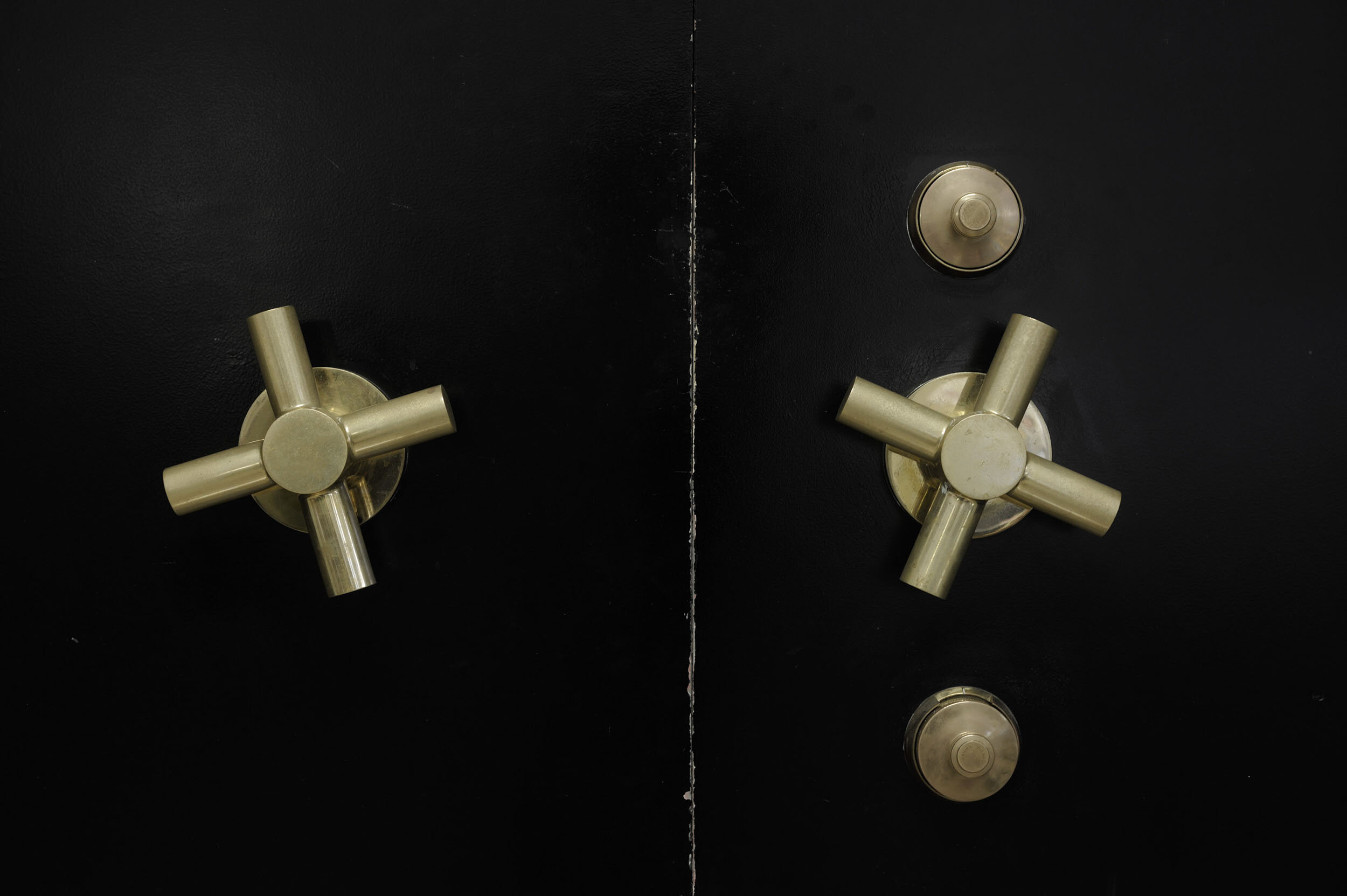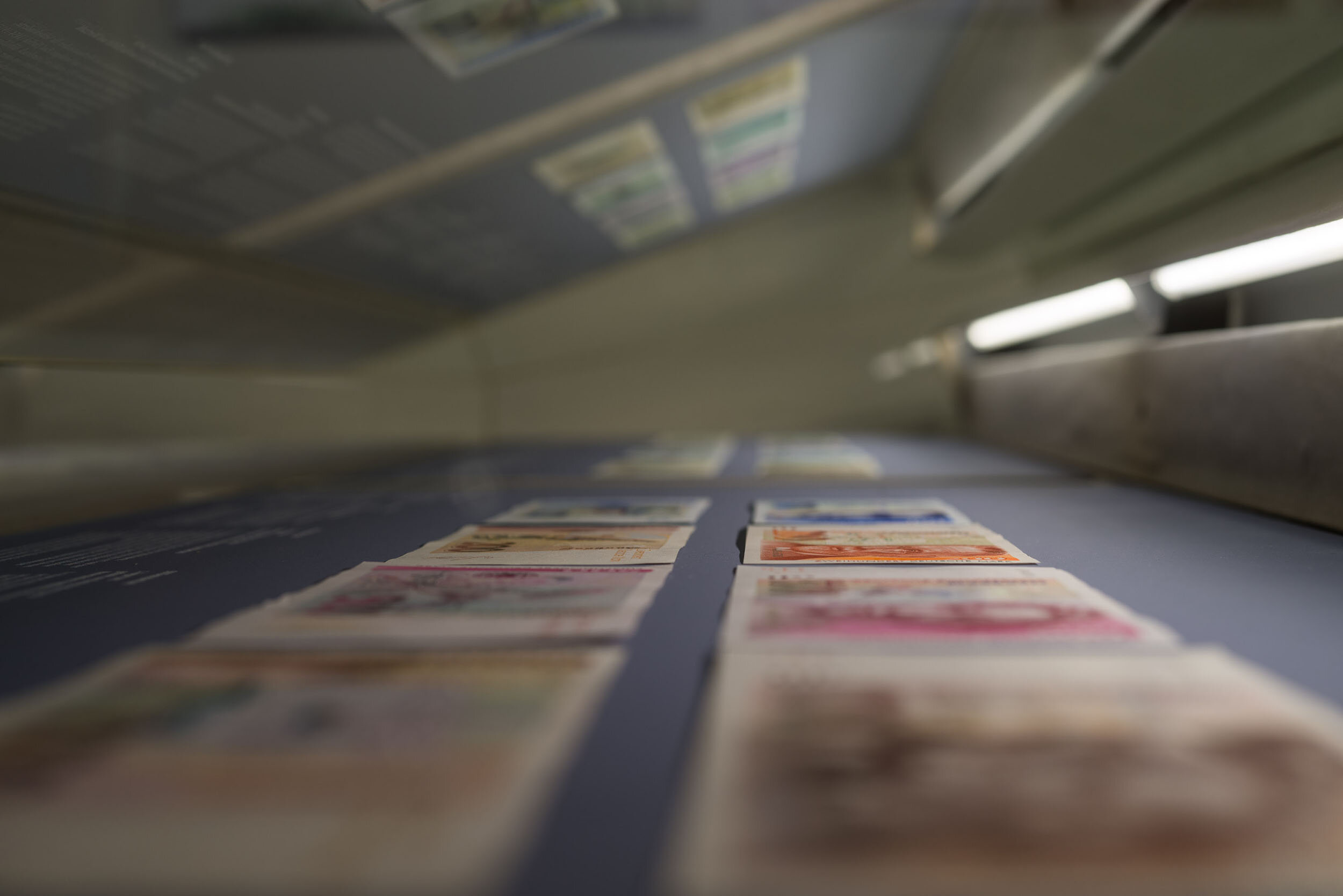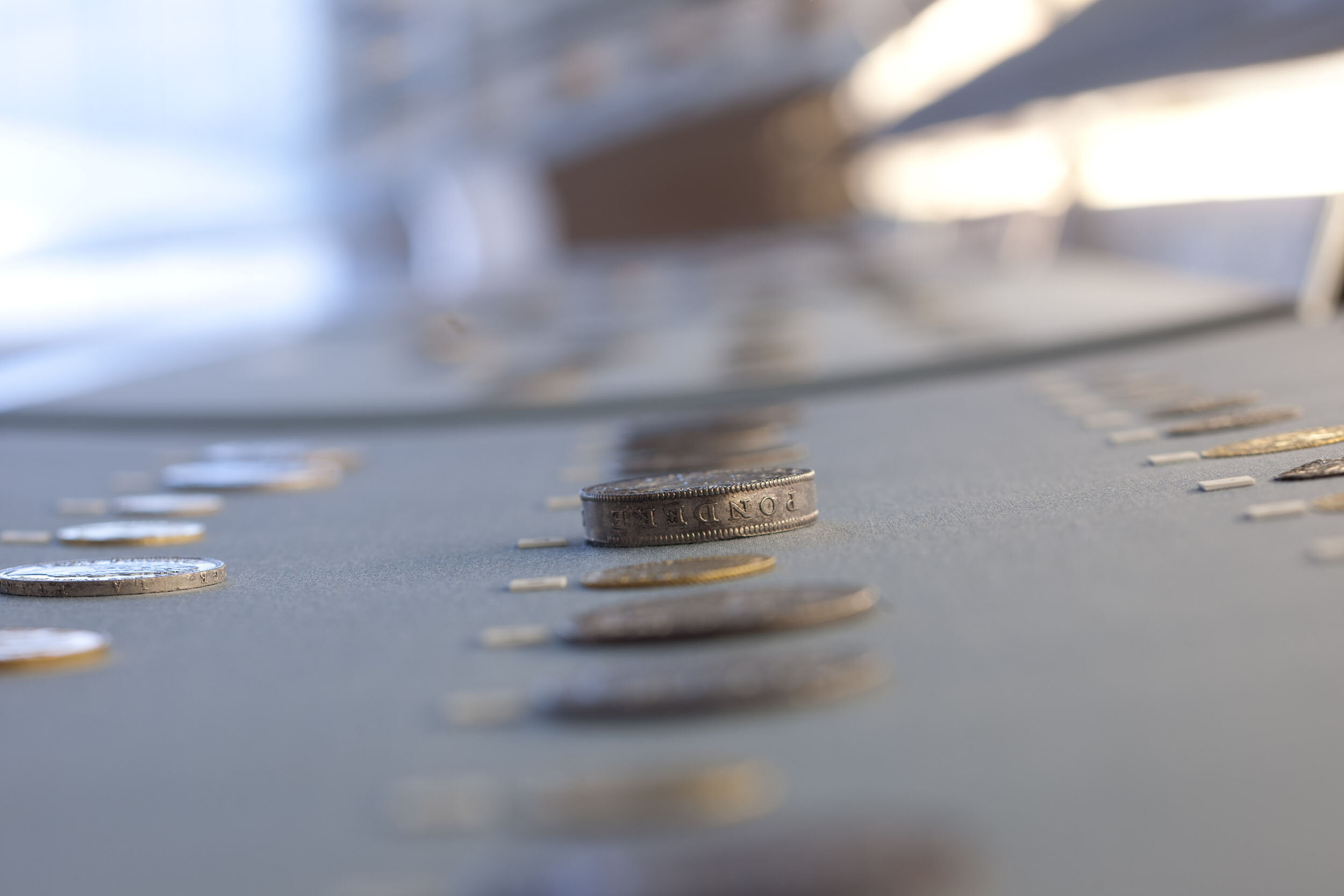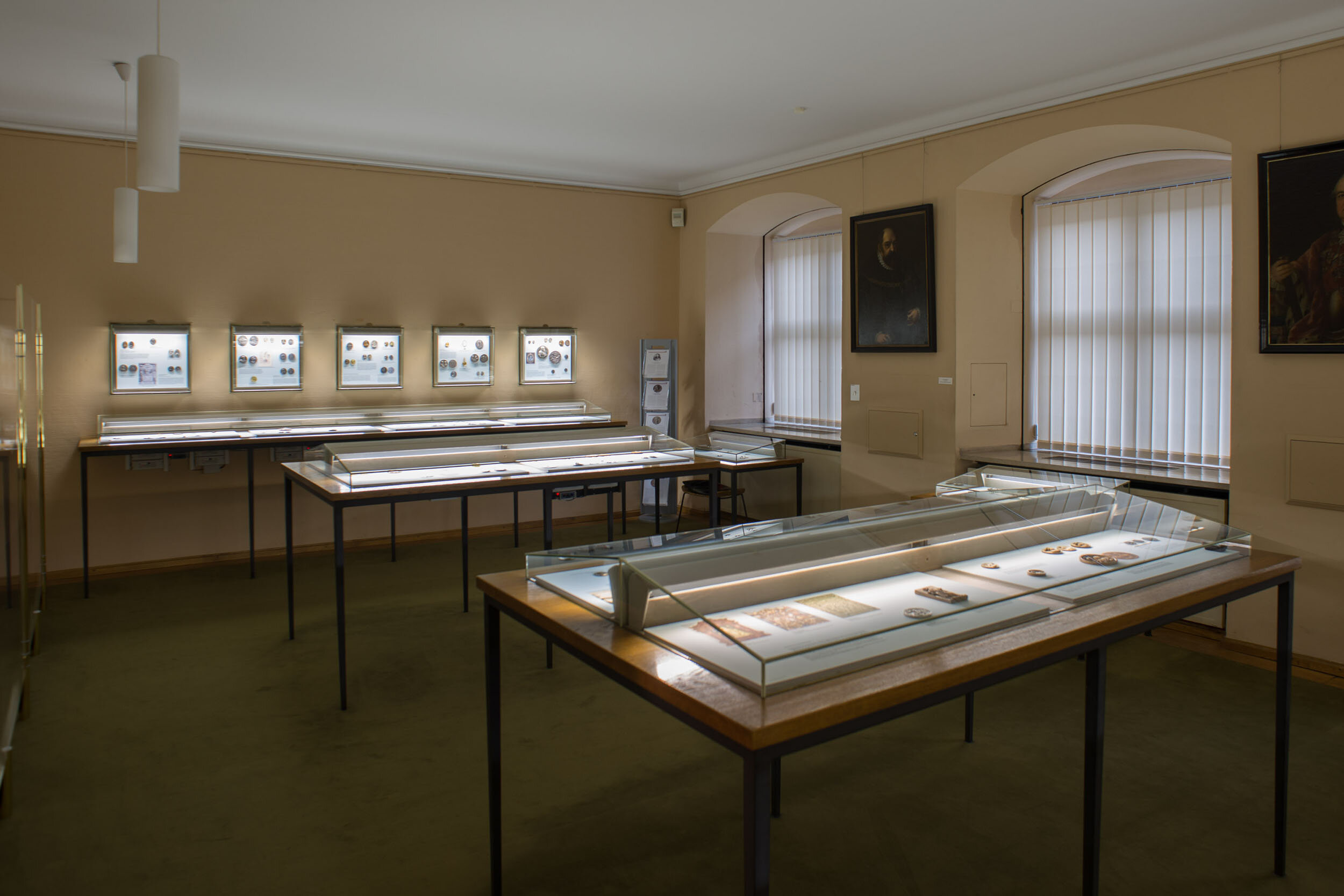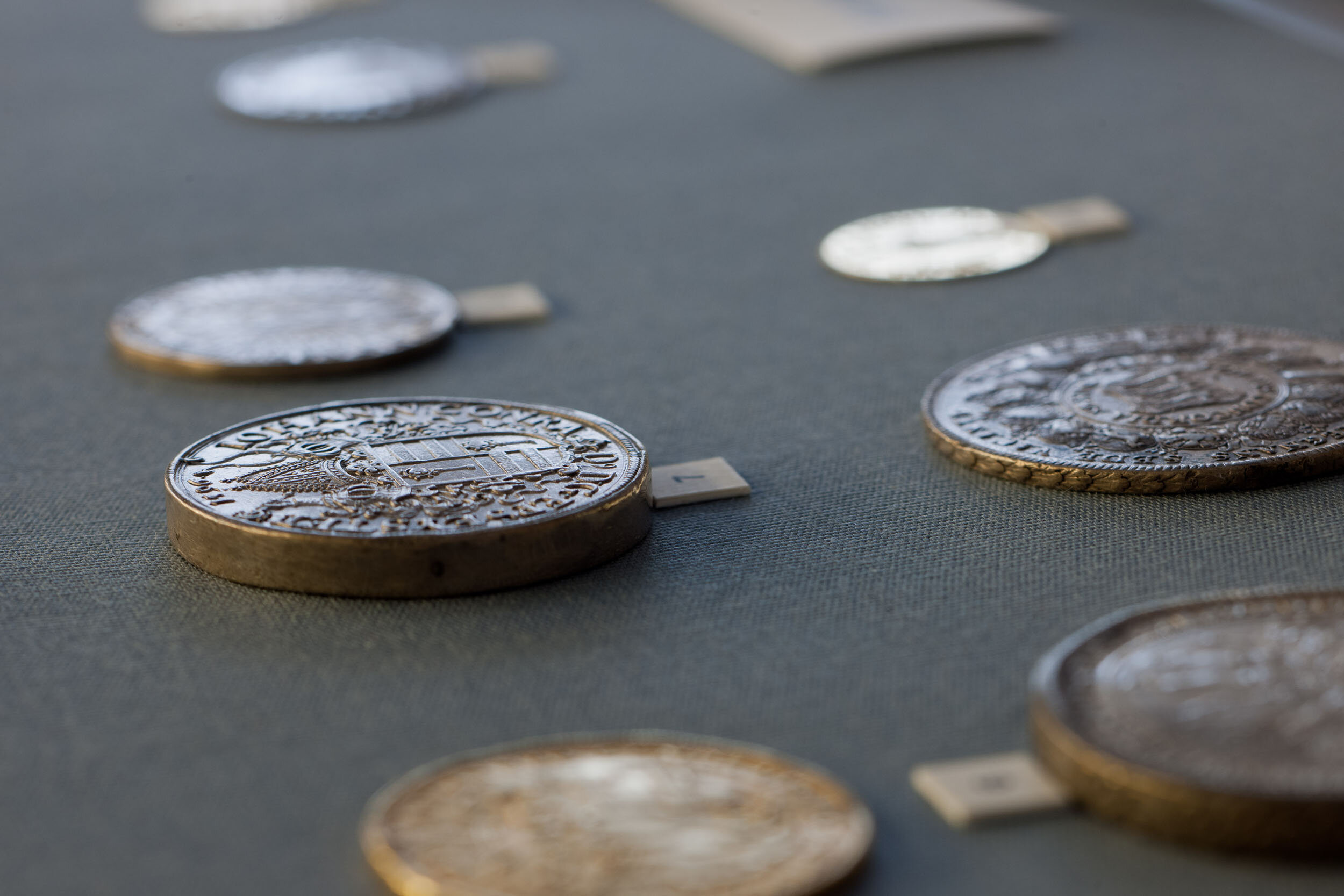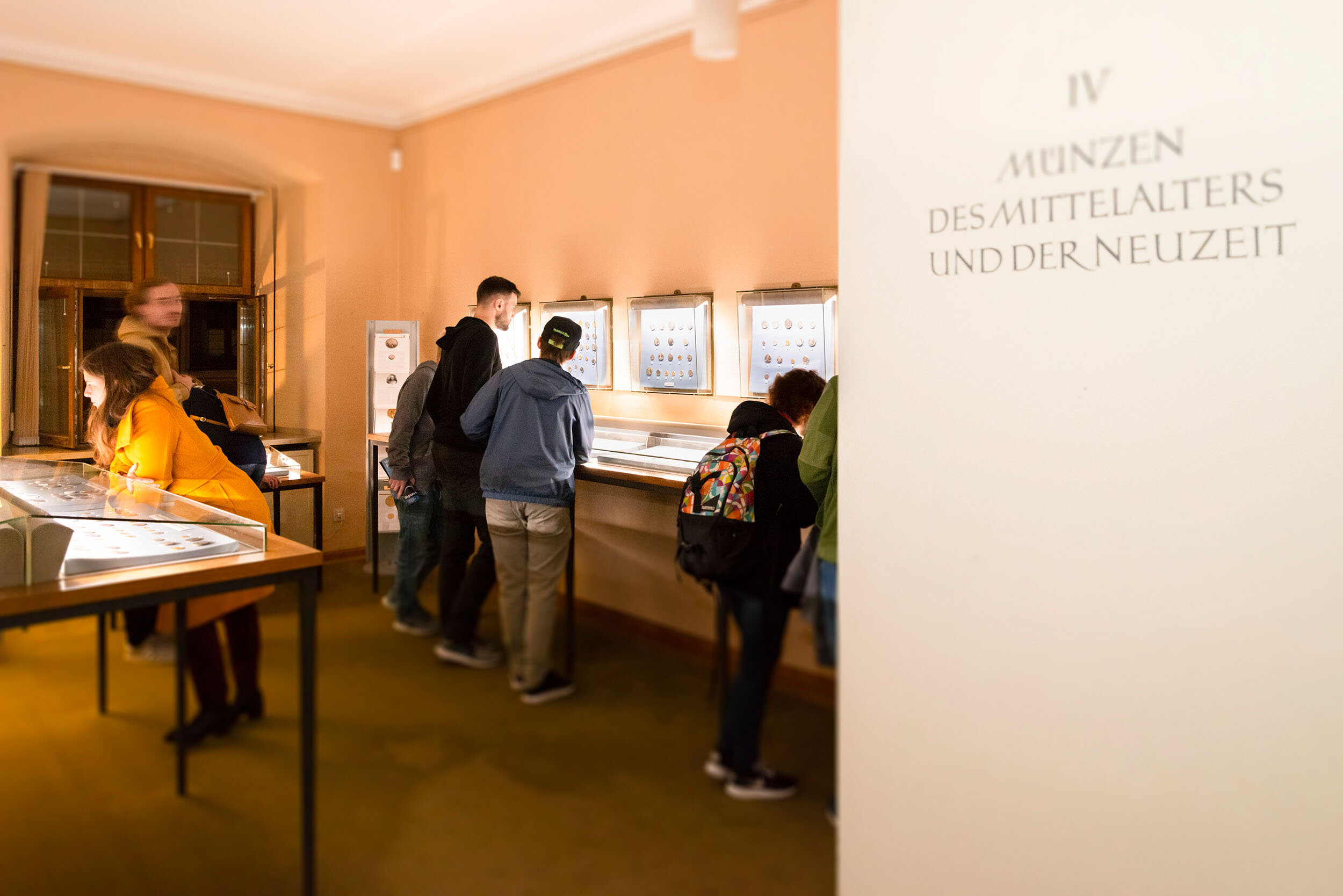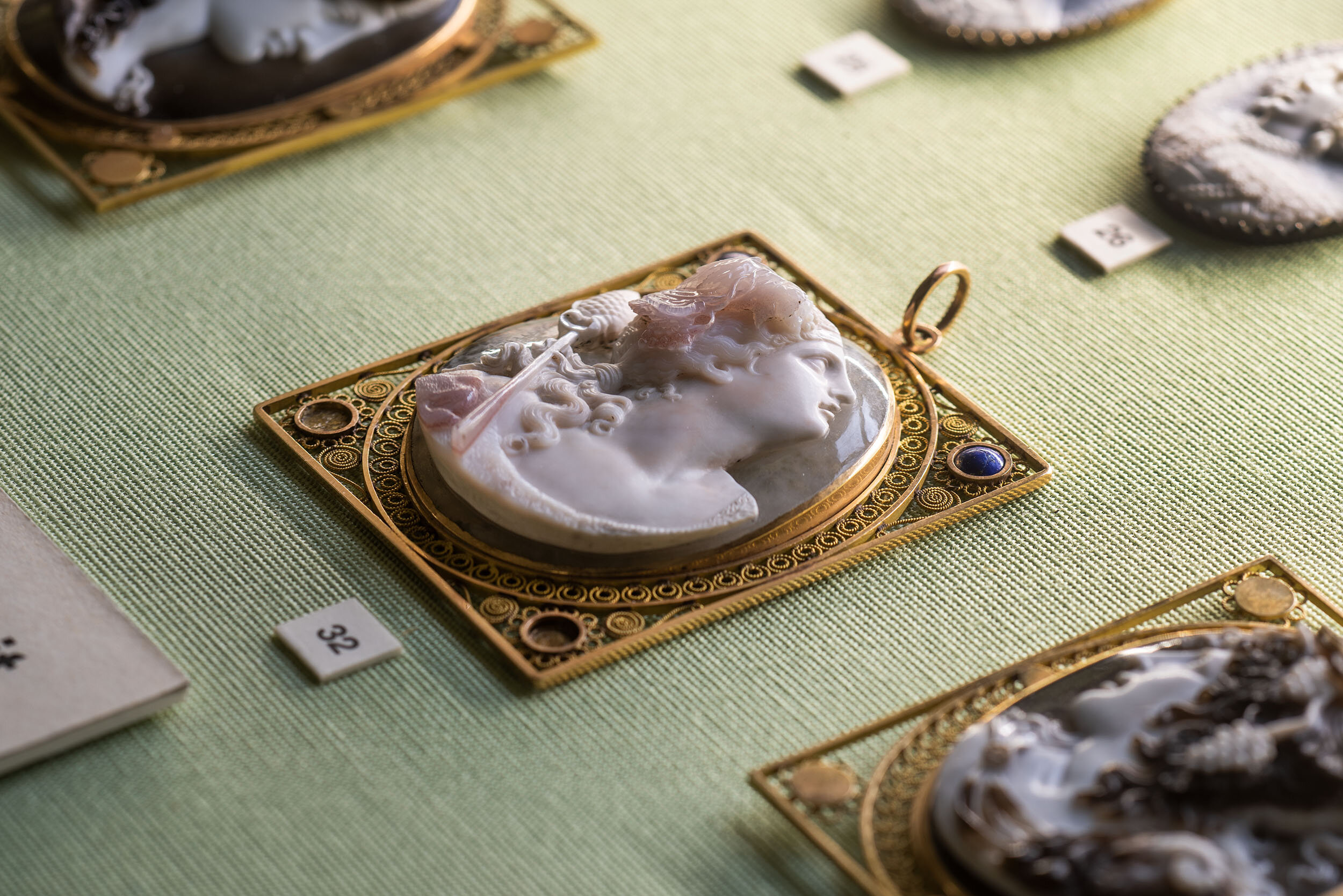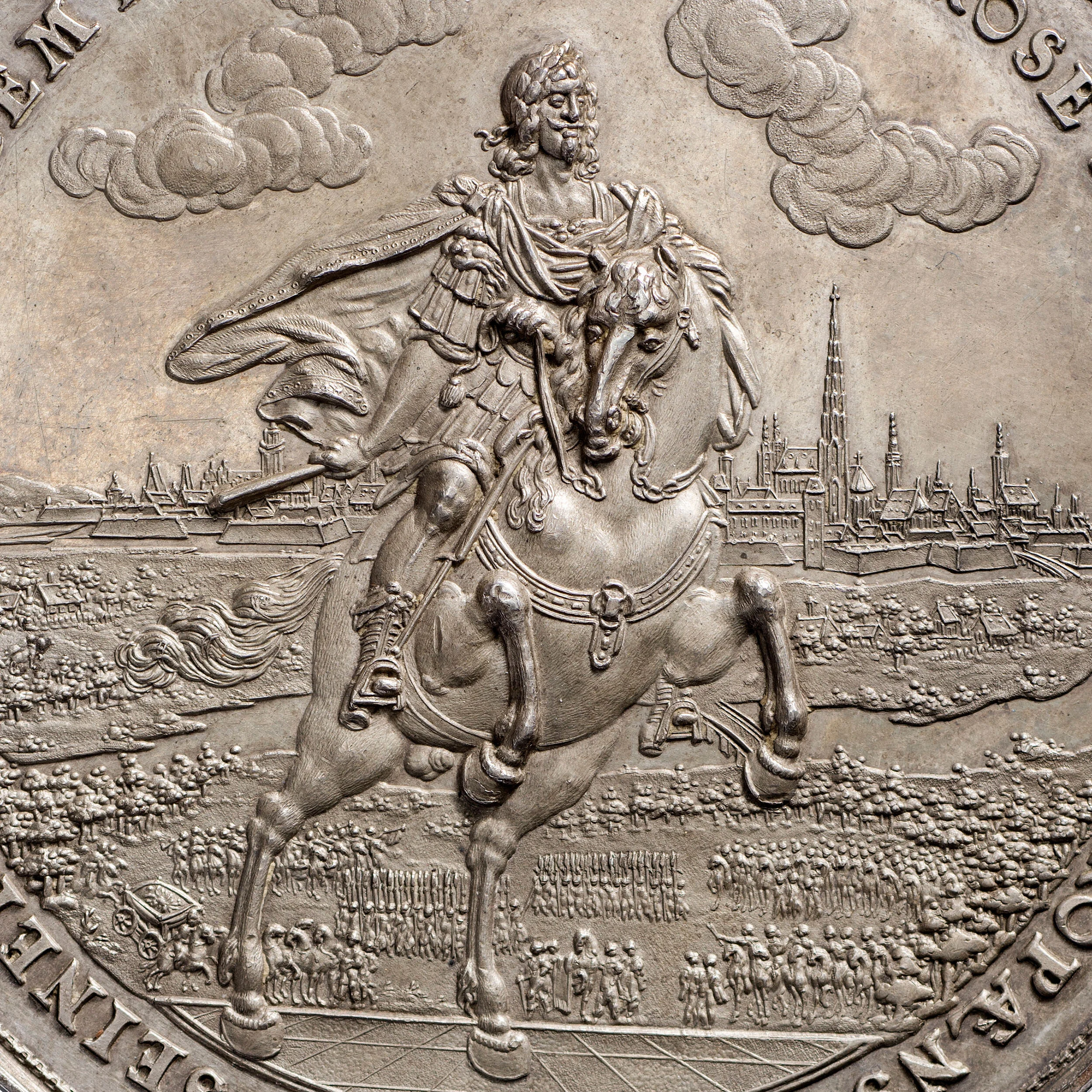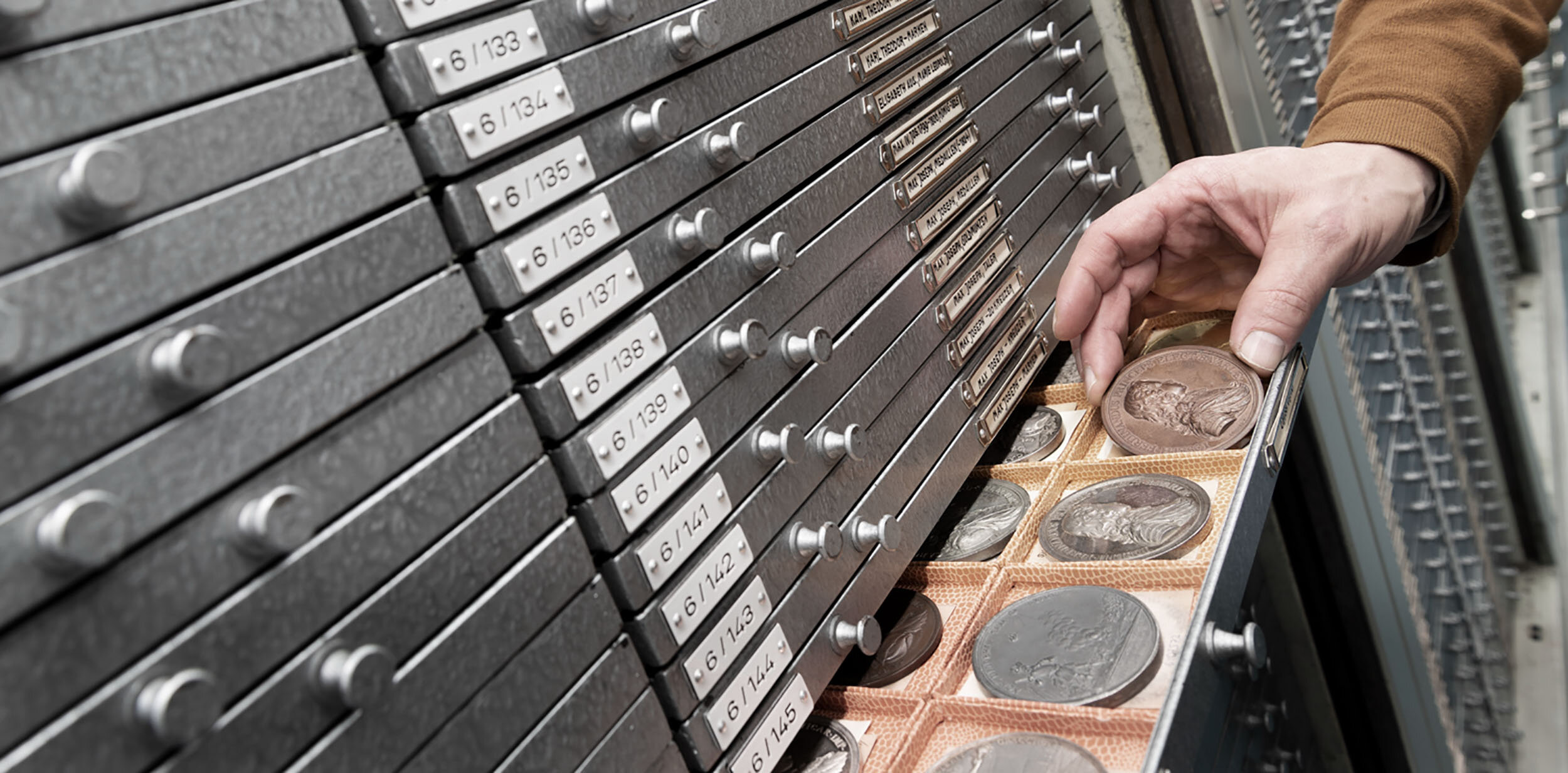
Orders of Knowledge
There are more than 300,000 objects preserved in the vault of the Coin Collection.
The universal collection is ordered according to numismatic systems and the respective categories, distributed over more than 60 cabinets fitted with special trays.
Thesaurus of Bavarian History
The quality and extent of the Bavarian Coin Collection is unique. The precious group of so-called jewels originated from the family treasure of the House of Wittelsbach. It consists of gold medals mounted with precious settings showing portraits of the Wittelsbach rulers.
From Bavarian archaeological finds we have famous hoards of coins from the times of the Celts, the Romans and from the Middle Ages.
The precious coin collections of the museum include coins from ancient Sicily, from German princes and bishops, including those of the archbishops of Salzburg.
The collection of medals lays its focus on the German Renaissance as well as on the German princes and the popes.
The collection of gemstones ranks among the most important in Germany.
The Great Journal of Human Culture
Coins
The classic field of academic collecting is coins. While the interest of the princes and scholars of the Munich court of the 16th and 17th centuries was directed primarily towards ancient coins, later coinages came increasingly into focus in the 18th century.
Banknotes
Established in China since the Middle Ages, in Europe since the 17th century. Without material value and no more than a sort of promise of the purchase value, for a long time banknotes were regarded as surrogate money.
Medals
Unlike coins, medals originally served as exclusive gifts from princes, the genteel and academic world. Intended for show, they were larger and more ornate.
Gemstones
The art of cutting stones has its roots in ancient Babylon and Egypt. These collections are traditionally stored in close proximity to coins. What they both have in common is that they reflect the cultural history of Europe and the Ancient Near East in small format. That they were frequently created by the same artists also connects them.
Coin Cabinets
Old coin cabinets are fascinating because they demonstrate how coins were esteemed. This inherited collection is particularly extensive, consisting of approx. 70 historic coin cabinets. The collection of black and gold lacquer cabinets from Japan, which were reworked at the Munich court into coin cabinets, is the largest in the world.
Pre-coin Exchange
From Europe to the South Pacific: Before coins were “invented” almost anything could be used as money: shells, feathers, jewellery, tools, stones, domestic animals, cocoa beans... The Bavarian State Coin Collection owns a large number of these pre-coin currencies from all over the world.
Our History
The Bavarian State Coin Collection dates back to Duke Albert V (1550-1579) and is thus the oldest historically documented collection of its kind in Bavaria. The Renaissance duke established a Kunstkammer (cabinet of curiosities), in which besides exotica and valuable objects he put special emphasis on what were mostly ancient coins. In 1598, no more than 50 years after it was founded, the Kunstkammer already encompassed more than 7,000 coins.
The collection suffered a great loss in 1632, when the Swedes, led by King Gustav Adolph, plundered the Residenz during the Thirty Years’ War. The gold coins and other valuable items had however been removed to a safe place beforehand.
Thanks to the acquisition of private collections, treasure troves but also by dint of specimen of the Bavarian electoral princes fresh from the mint, the collection quickly grew again. The collections from the Electoral Palatinate House of Wittelsbach (1785), the monasteries (1802/1803) and the Principality of Regensburg (1810) also augmented the coin collection.
In 1807, the coin collection was finally separated off from the court and initially put under the direction of the Bavarian Academy of Sciences and Humanities. Anyone who was interested could now visit the library and collection upon request. After the Second World War, the treasures of the Bavarian State Coin Collection were opened to the general public in 1963 in the Residenz, functioning as a museum.
Special Treasures out of more than 300,000 Objects
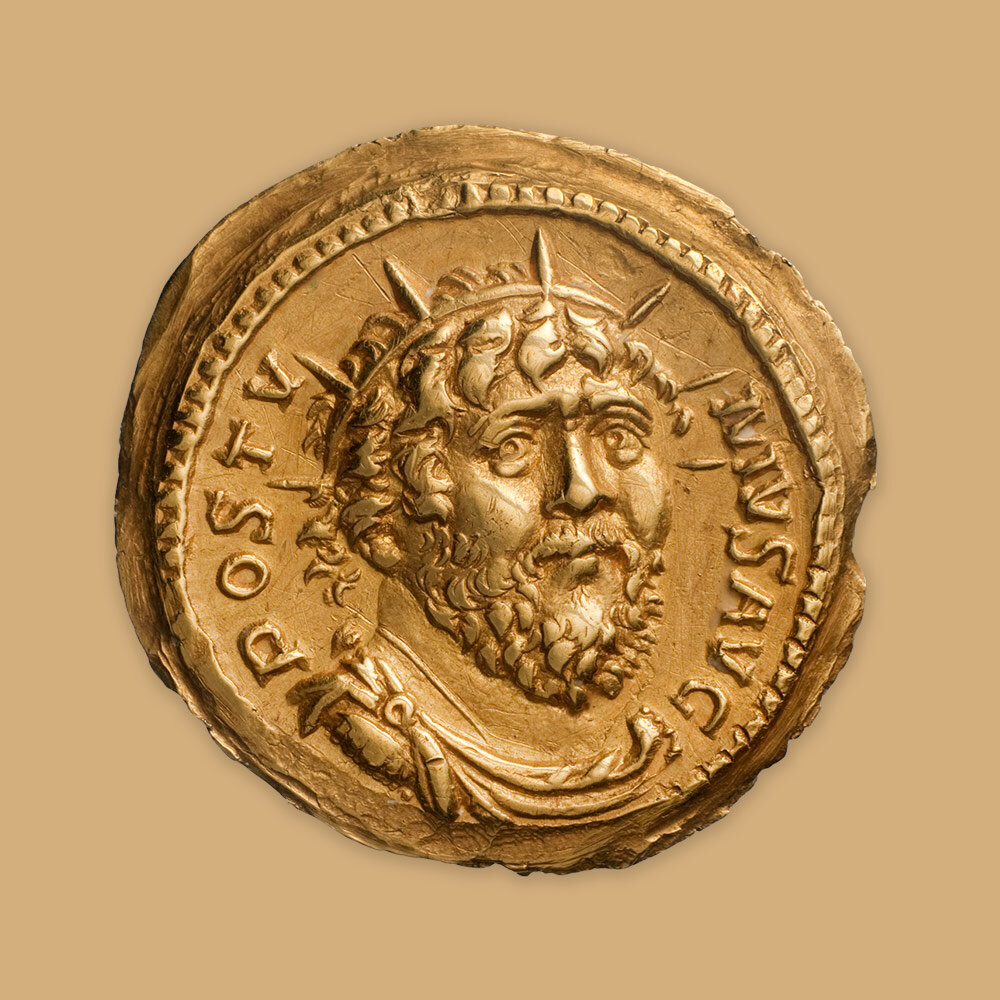
Portrait en face
Postumus, Roman aureus, Lyon(?), late 265 AD.
The coin was set as a piece of jewellery in secondary usage.
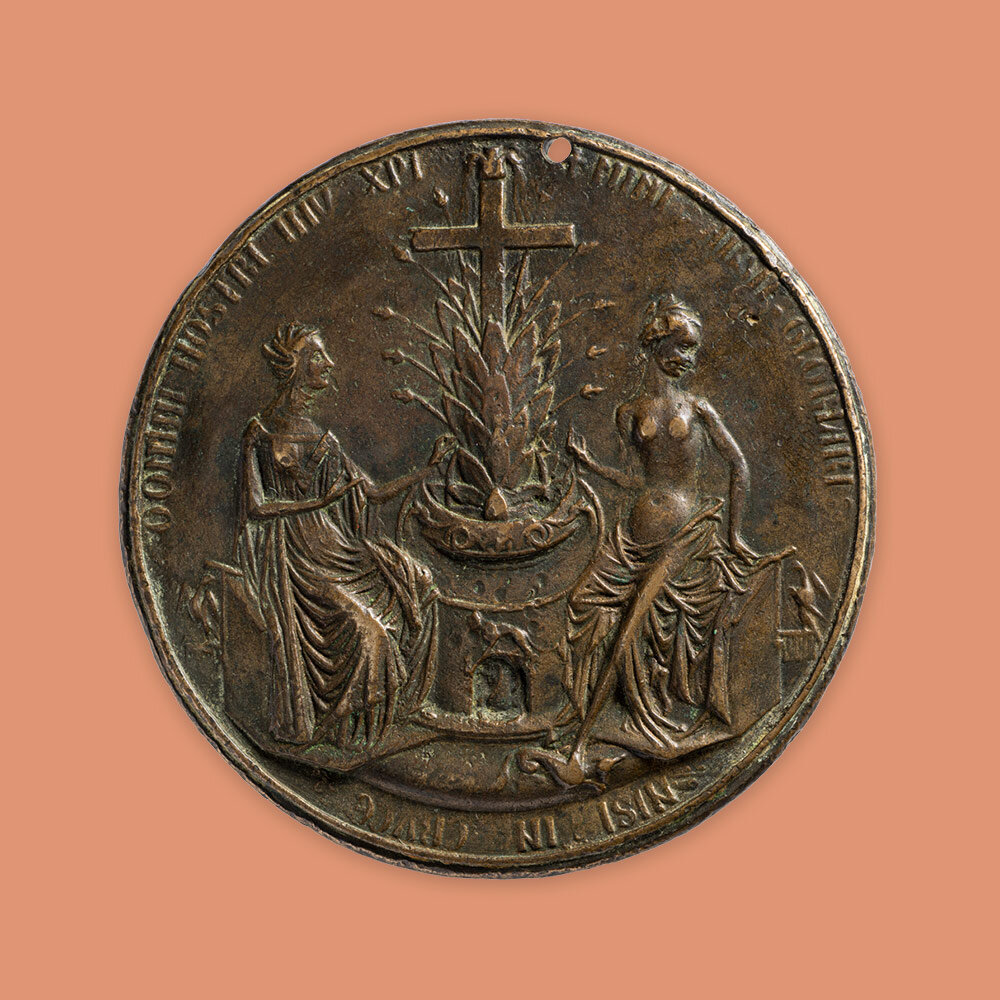
At the source of wisdom
Jewish Sarah and Hagar, her Egyptian servant, at the origin of life, medal, circle of the Limbourg brothers, 1402

Catholic religious fighter
Maximilian I of Bavaria, ‘gnadenpfennig’, 1623-1624.
Such high-class medals were awarded as a sign of princely favour.

Enigmatic women
Miseroni workshop, two African women, late 16th century
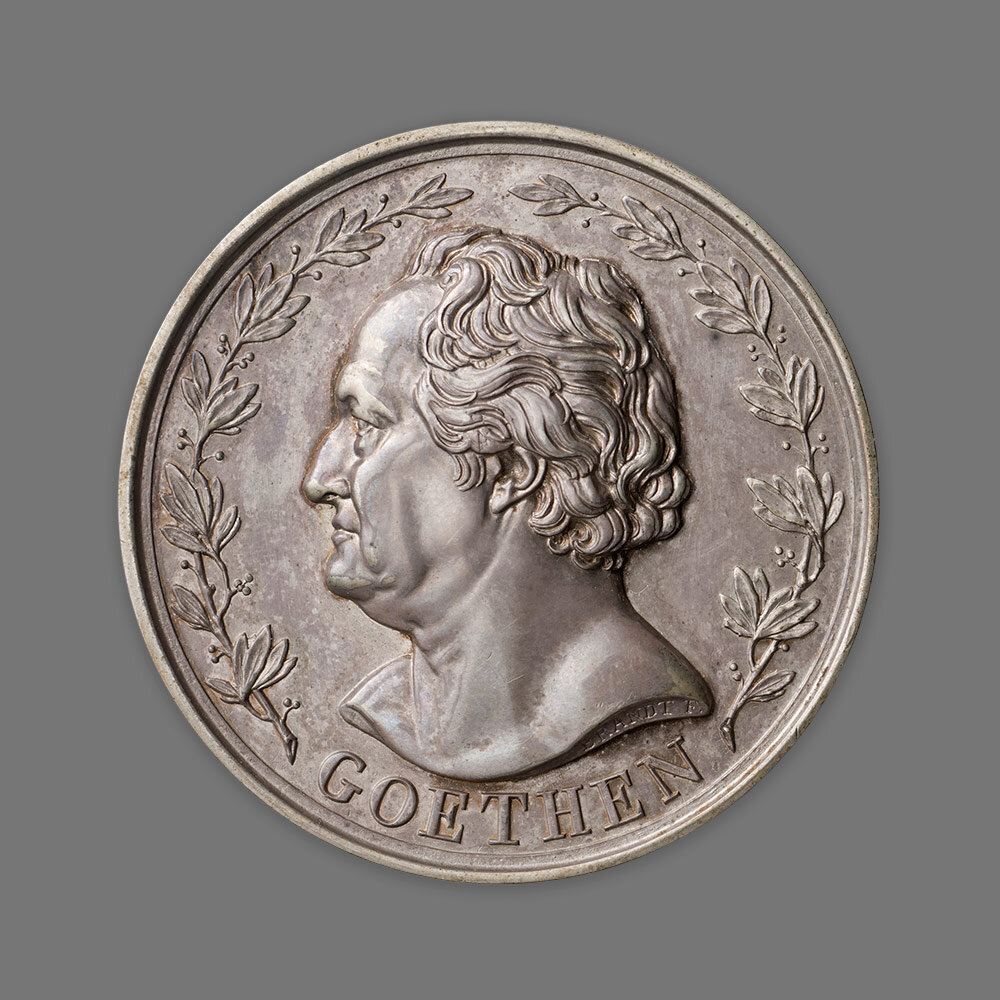
The last universal genius
Goethe, medal by H.-F. Brandt, Berlin, 1826.
“Thinking is more interesting than knowing, but less interesting than looking”.
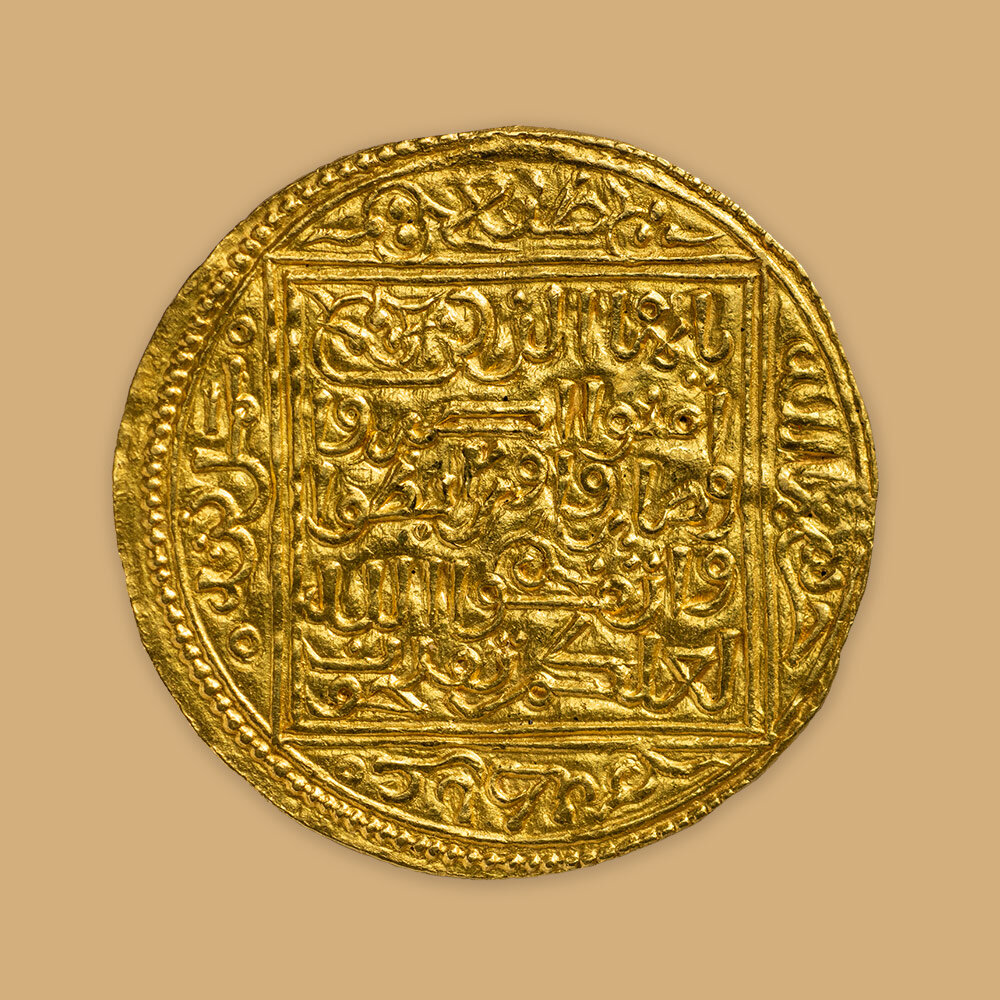
Final splendour of Moorish culture
Moorish double dinar, Abu I-Hasan Ali, emir of Granada, 1464-1484

When Augustus vanquished Cleopatra’s crocodile
Roman denarius of Augustus, 29-27 BC.
The Nile with its crocodiles stood for the whole of Egypt.

Far from paradise
Temptation of faith, plaquette by Peter Flötner, after 1530
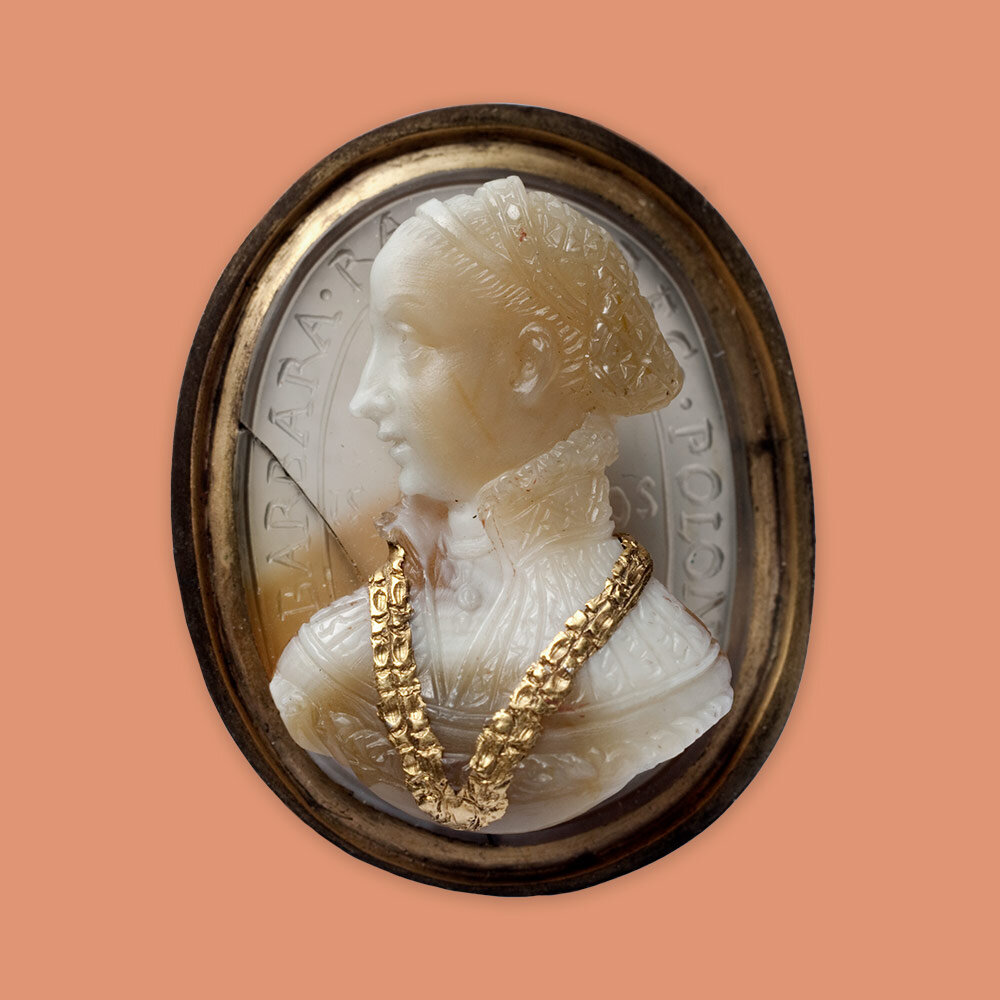
The gem of the great love of Sigismund II of Poland
Barbara Radziwill, sardonyx, around 1550
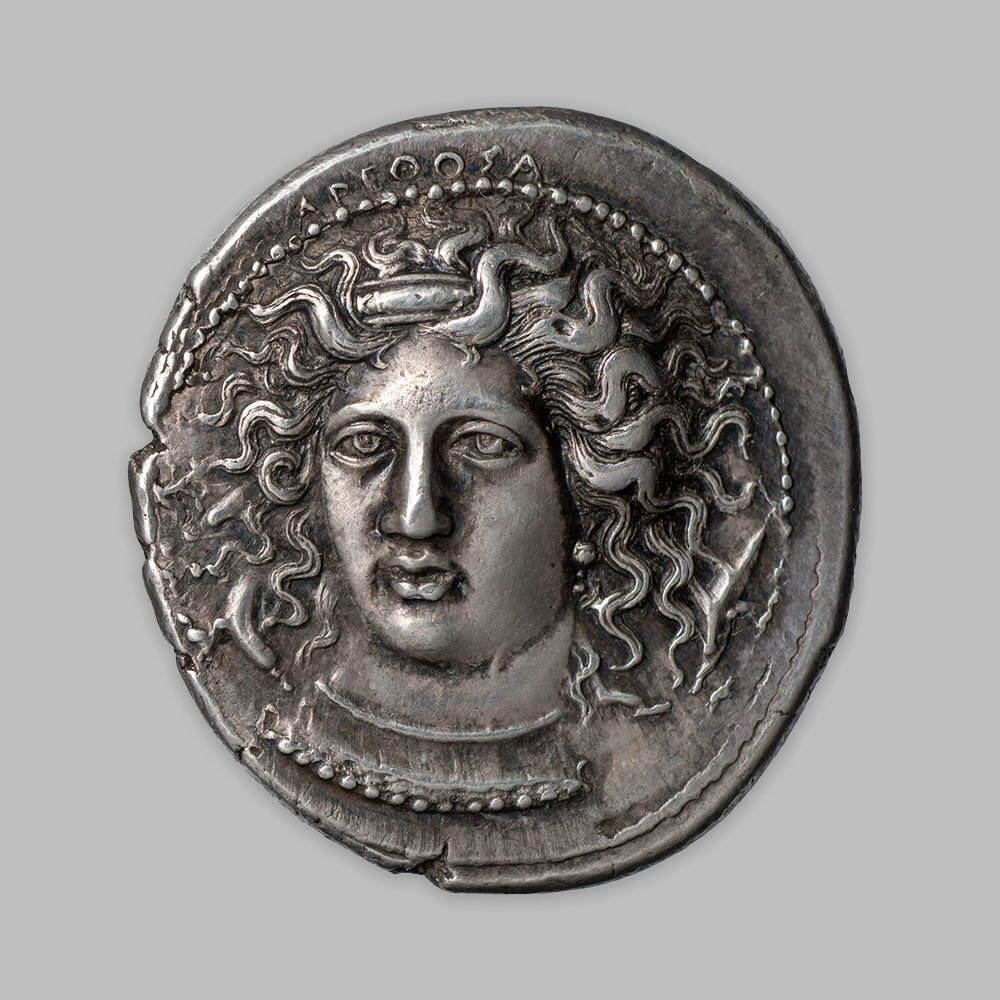
The power of water
Fountain nymph Arethusa, Greek decadrachma, Syracuse, 400 BC
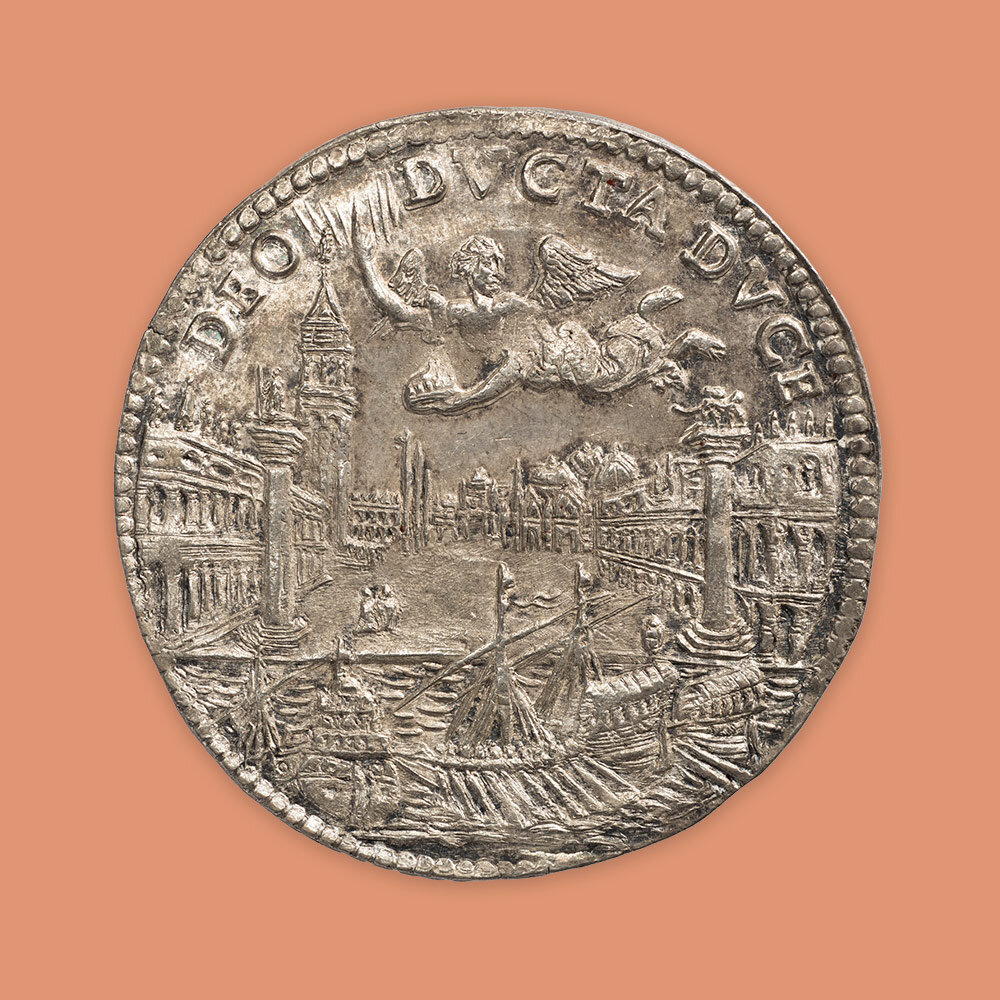
Doges make special presents
Image of Venice on an osella, the traditional commemorative coin of the maritime republic, 1684
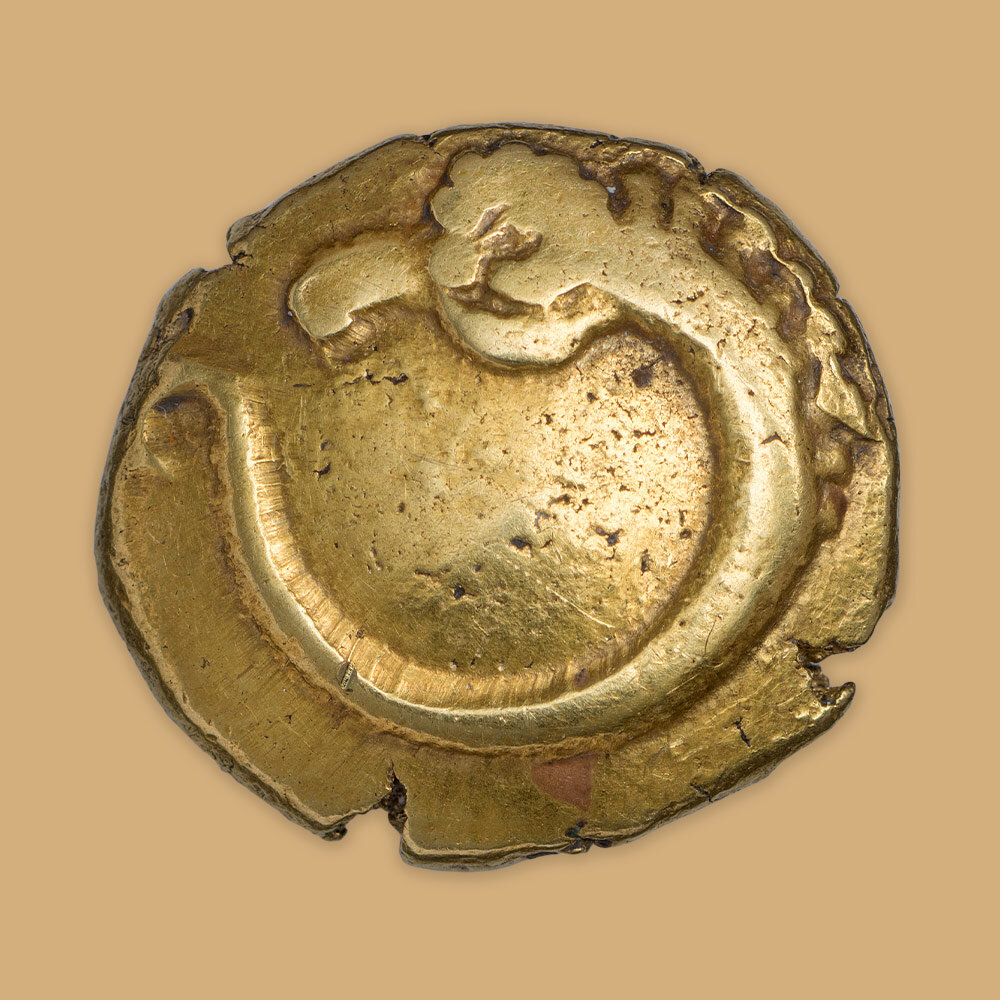
Somewhere under the rainbow (obverse)
Celtic rainbow cup, Vindelici, 2nd - 1st century BC
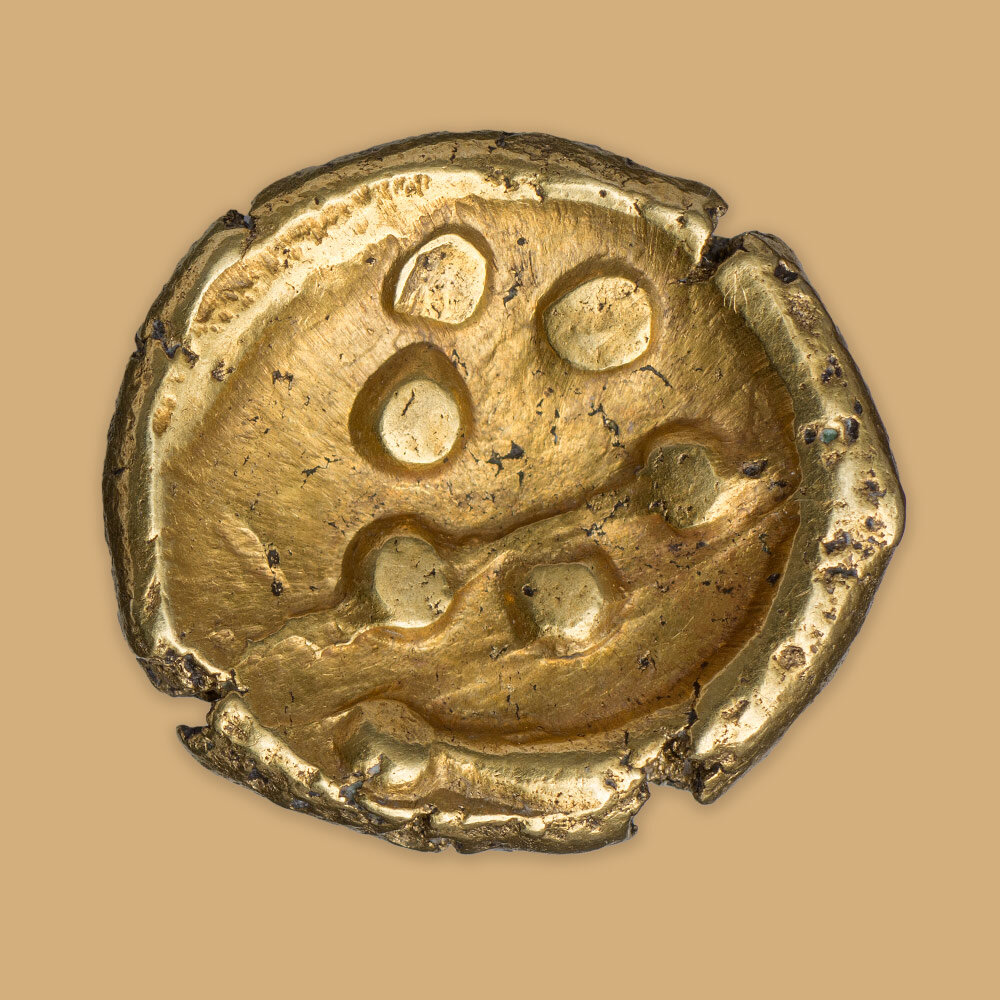
Somewhere under the rainbow (reverse)
In Old Bavarian folklore, belief had it that rainbows stood over two stretches of water and sipped little gold cups out of them.

The master
Stefan George, medal by Hans Schwegerle, 1930.
“Thou art my wish and all I think / I breathe of thee in all my air...”
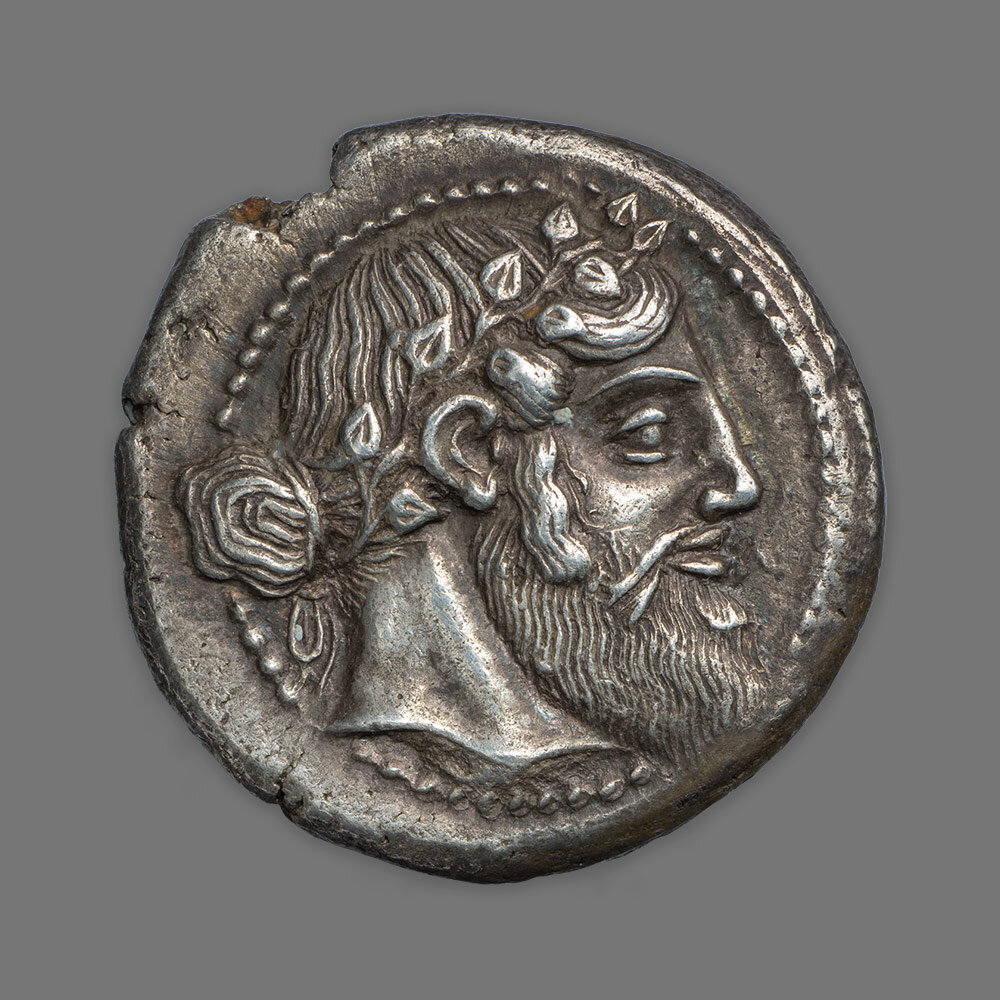
Intoxication (obverse)
Dionysus, the god of wine, Naxos, Greek tetradrachm,
460-430 BC
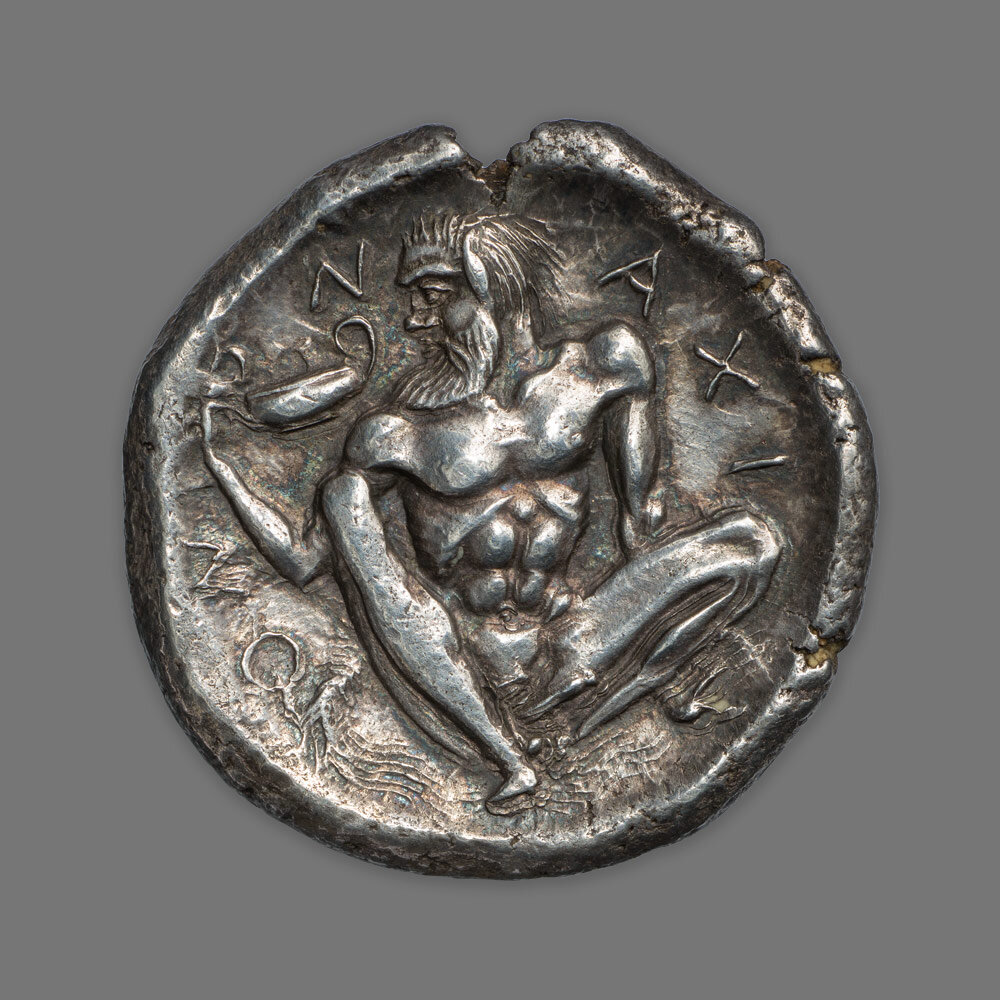
Intoxication (reverse)
Satyr; “All of the satyrs are brazen, constantly drunk / on the cups filled with pure wine.” Nonnos (Byzantine poet)
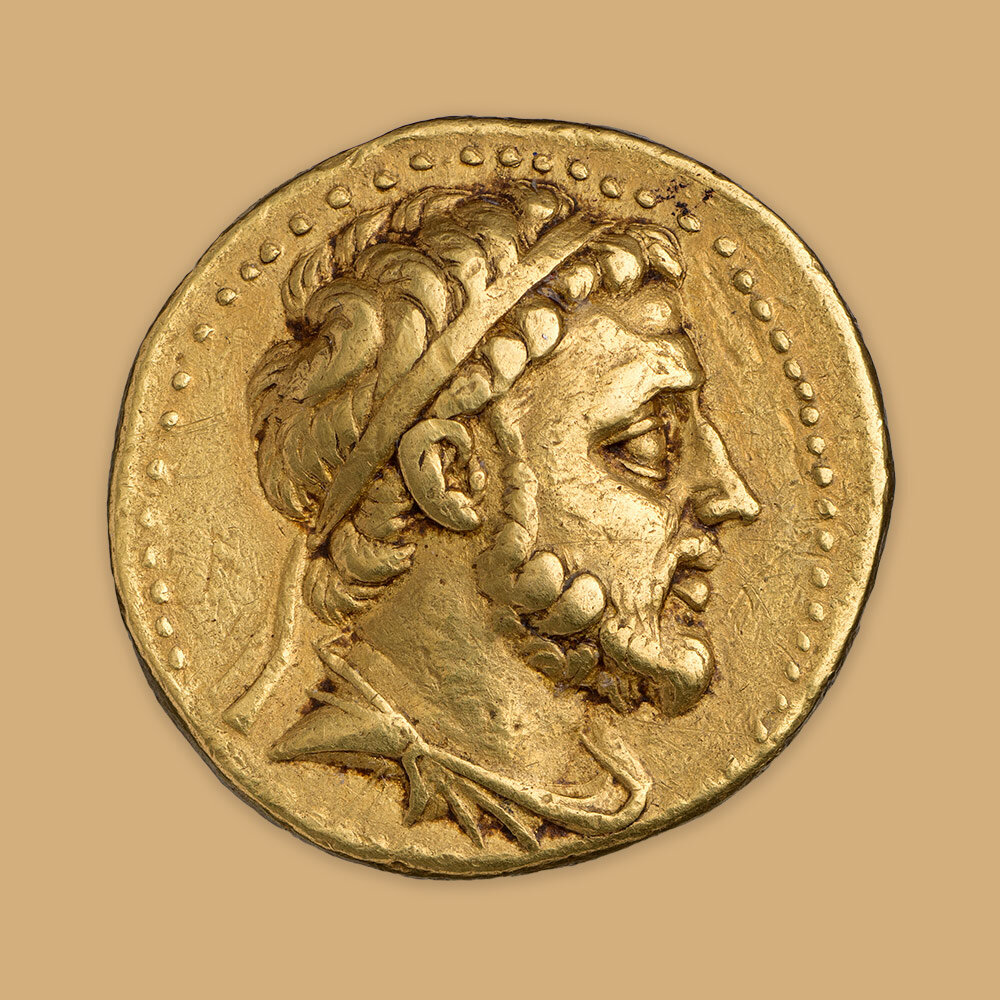
The face of the anti-king (obverse)
Achaios, Greek stater, 217-213 BC
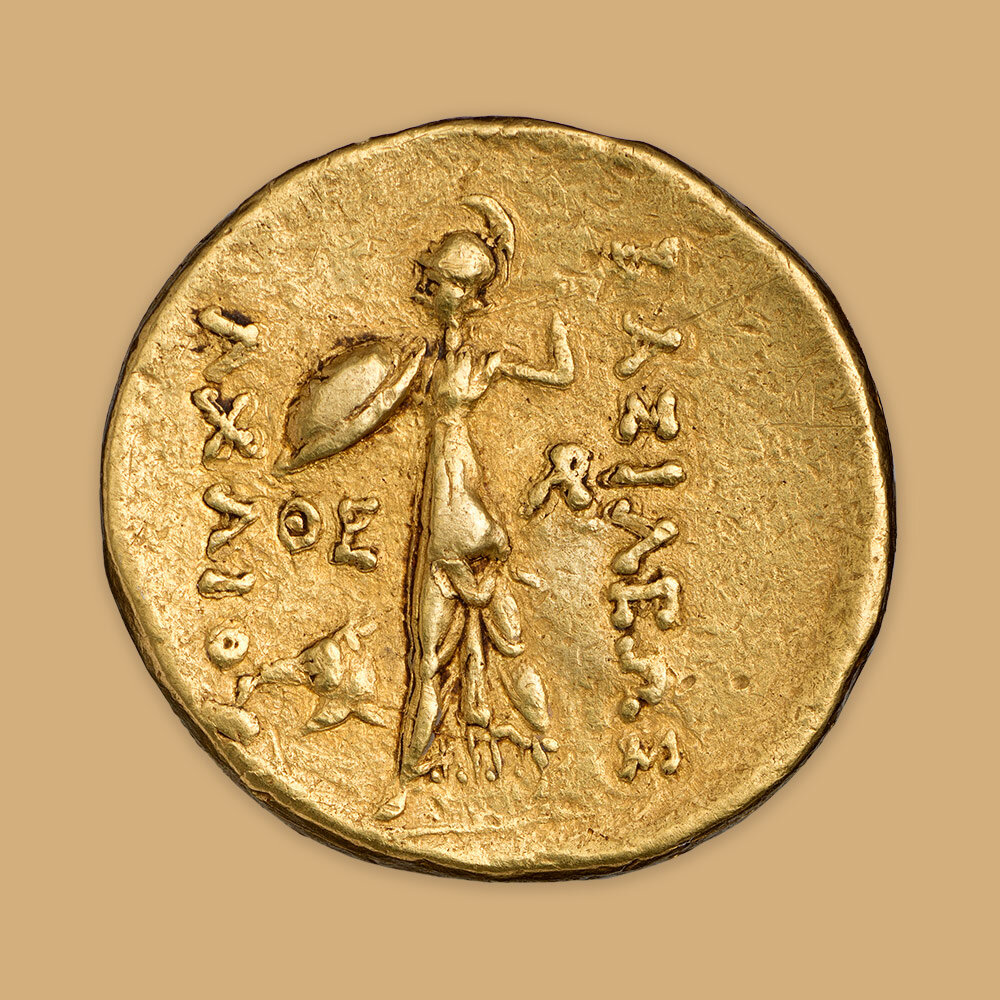
The face of the anti-king (reverse)
The legitimate king of the Seleucid Empire Antiochos III punished Achaios after his defeat cruelly.

Victor under the aegis of Christ (obverse)
Constantine the Great, Roman medal, 312 AD.
Chi-Ro symbol on the front of the helmet
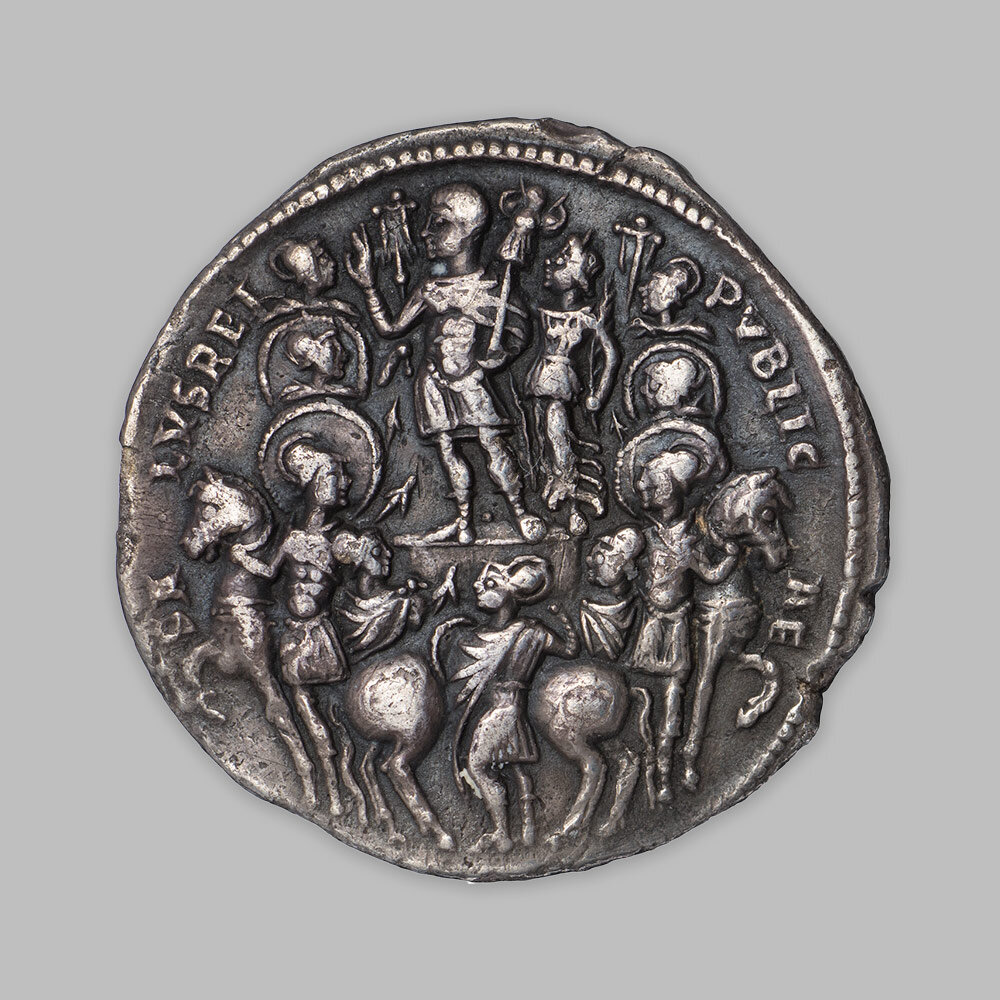
Victor under the aegis of Christ (reverse)
Constantine the Great addressing the army
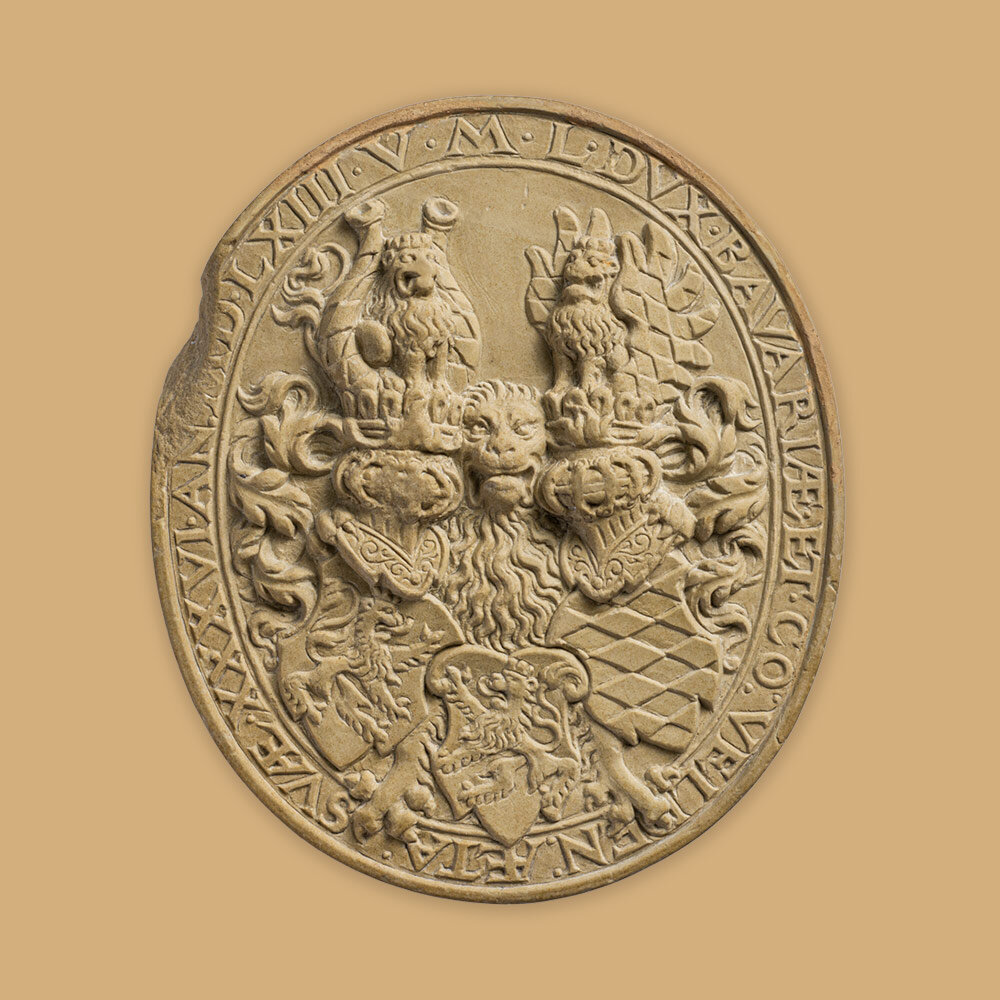
The beauty of old coats of arms
Coat of arms of Pfalz-Zweibrücken-Veldenz, stone model for a medal, Michael Weinolt, 1563

Sensuality in medal art
Lovers from a suite of medals by Klaus Kowalski, 2017
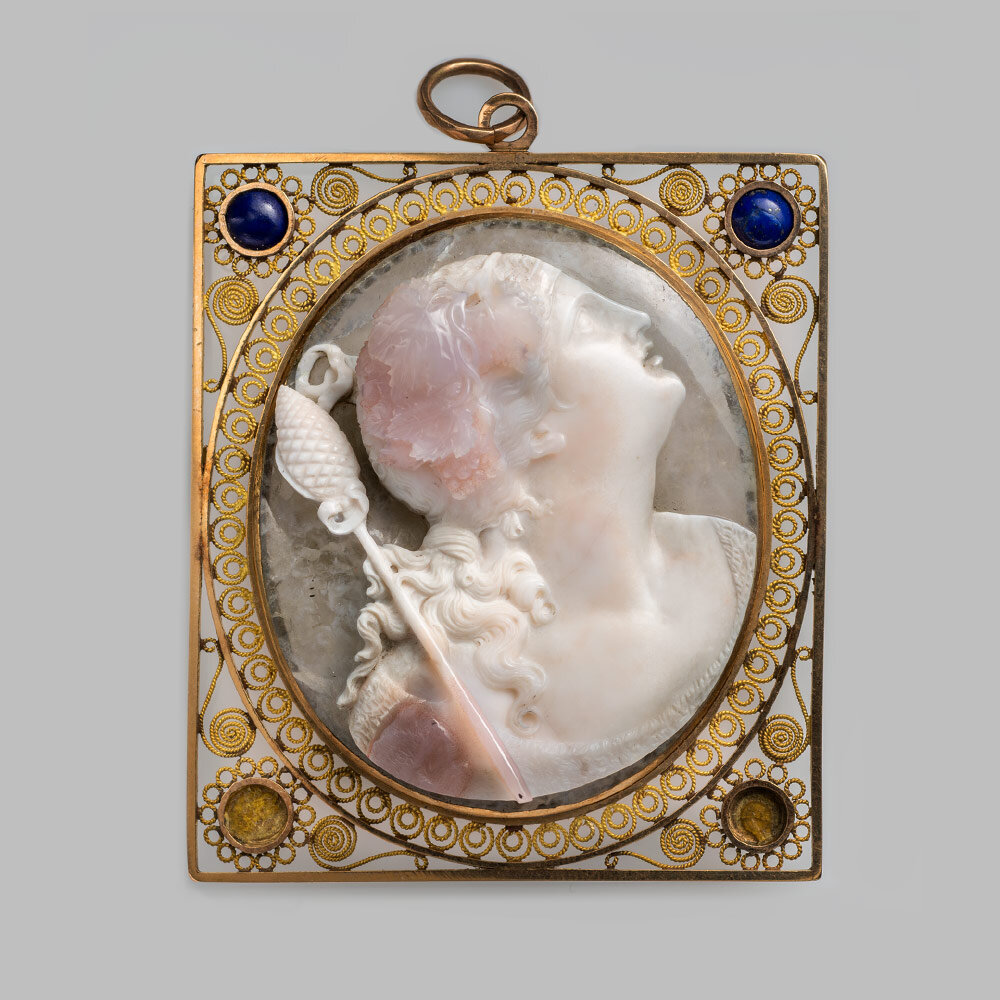
Ecstatic companion of Dionysos
Maenad on a cameo by Benedetto Pistrucci, agate with setting, around 1810
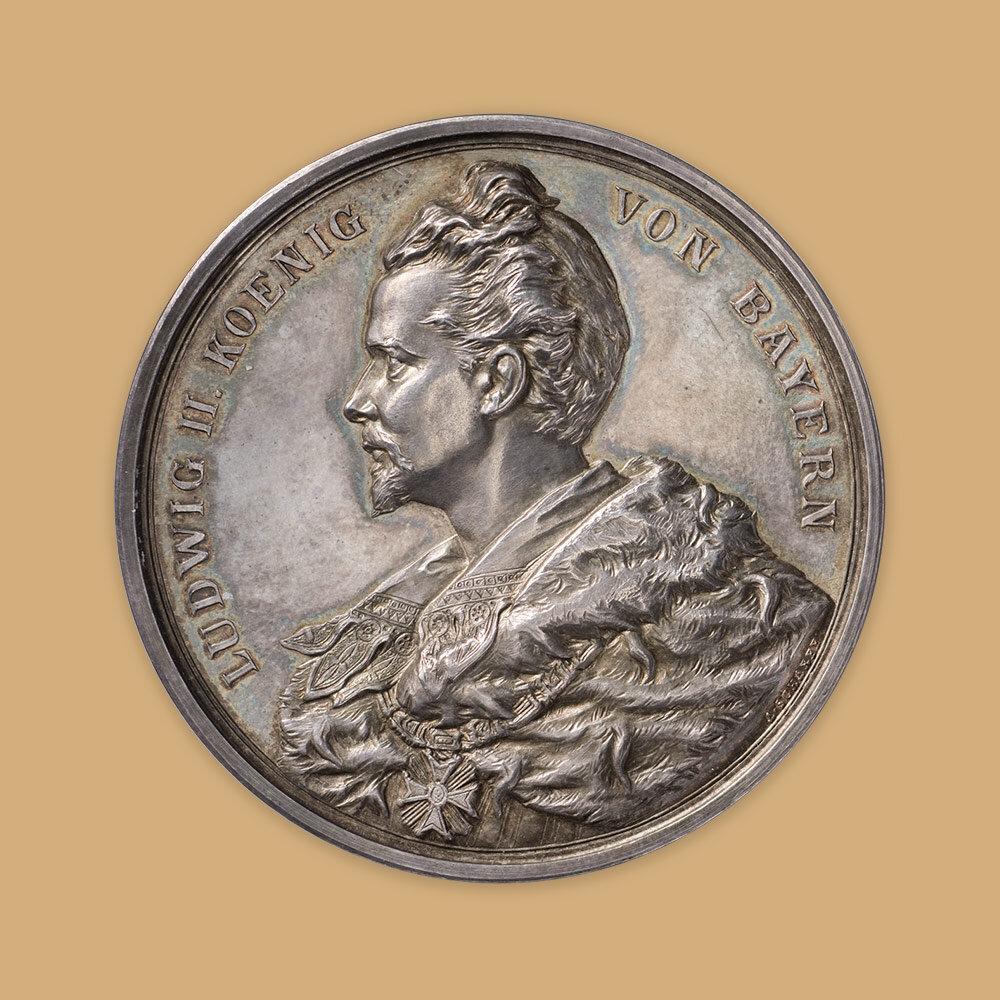
The “fairy-tale king” dreams of absolute monarchy
Ludwig II, medal from 1879.
Here Ludwig II. poses in an coat of the chivalric order of Saint Hubertus.

Silver eagle (obverse)
Five German marks, German Mint D = Munich

Silver eagle (reverse)
As of January 1 1965, those on military service received 2.70 DM pay instead of 2.50 DM pay a day.

Civic pride aspiring to heaven
Augsburg, 12 ducats, 1744.
The many exaggeratedly high towers demonstrate the self-confidence of the free and imperial city.

The name of the city Munich comes from “by the monks”
Pfennig, monk’s head, Munich, after 1400
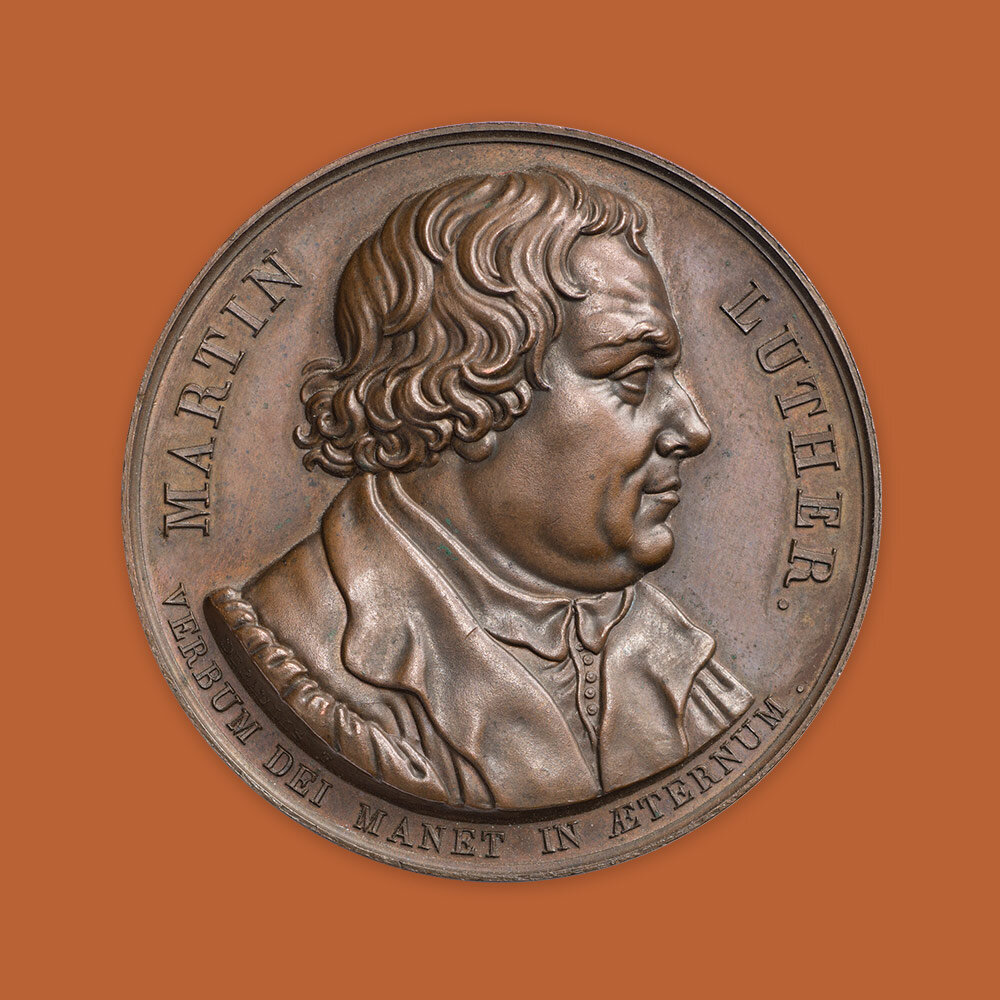
300 years posting of Luther’s theses (obverse)
Luther, medal by Alexis J. Depaulis, 1817
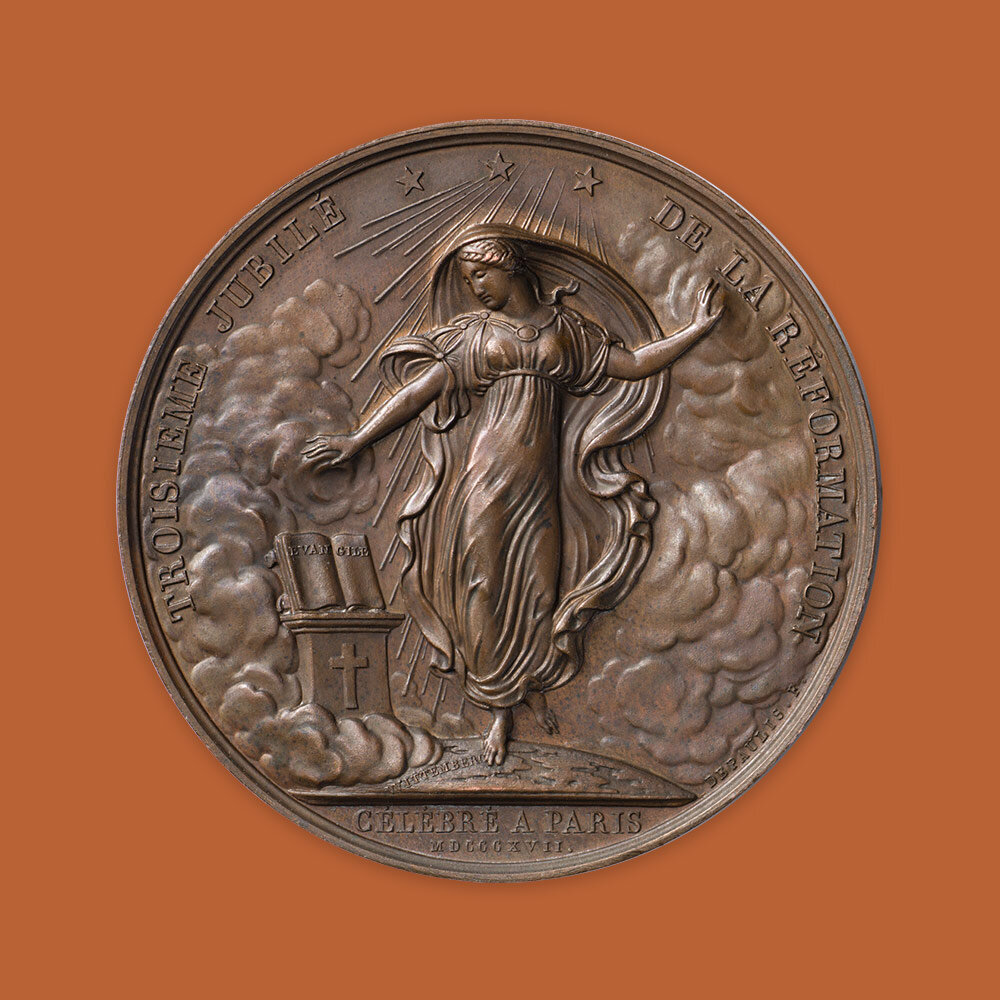
300 years posting of Luther’s theses (reverse)
The Reformation dancing
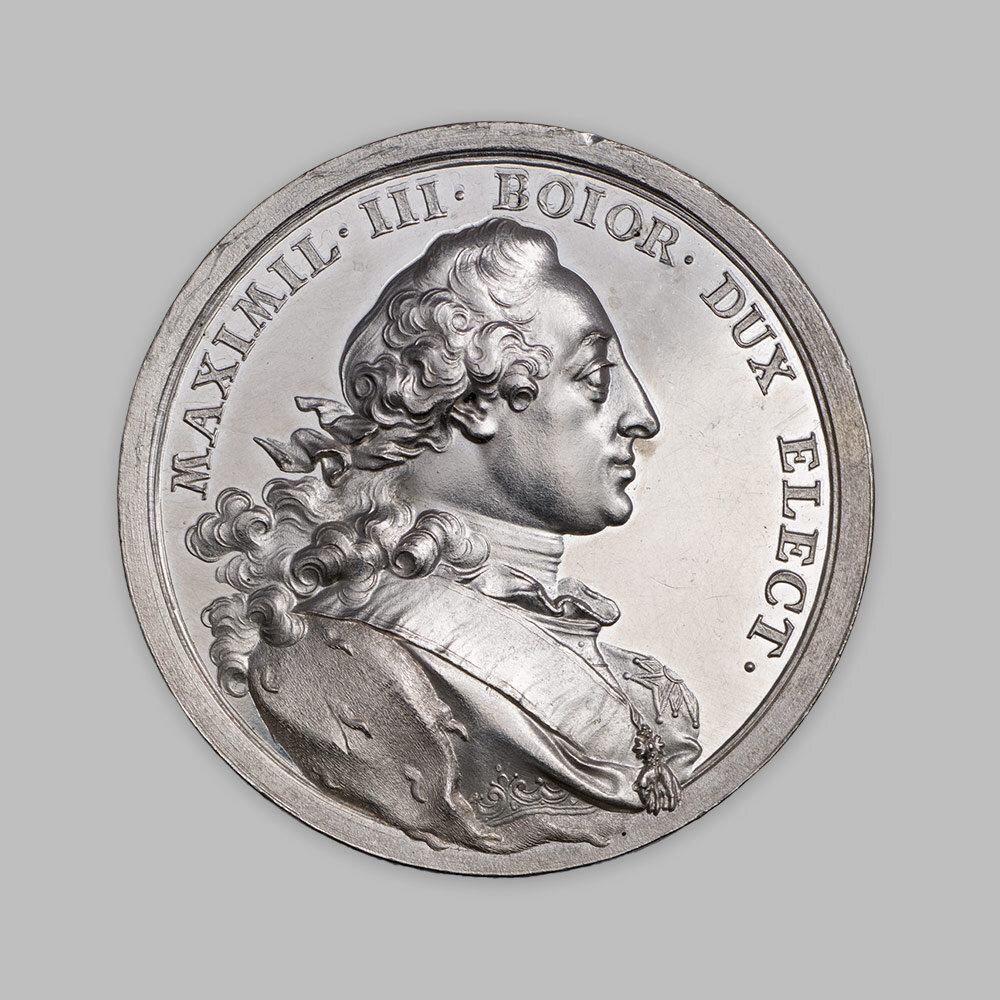
The last Old Bavarian Prince Elector
Maximilian III Joseph, medal from 1768.
Maximilian III ended the belligerent politics of his father and consolidated Bavaria.
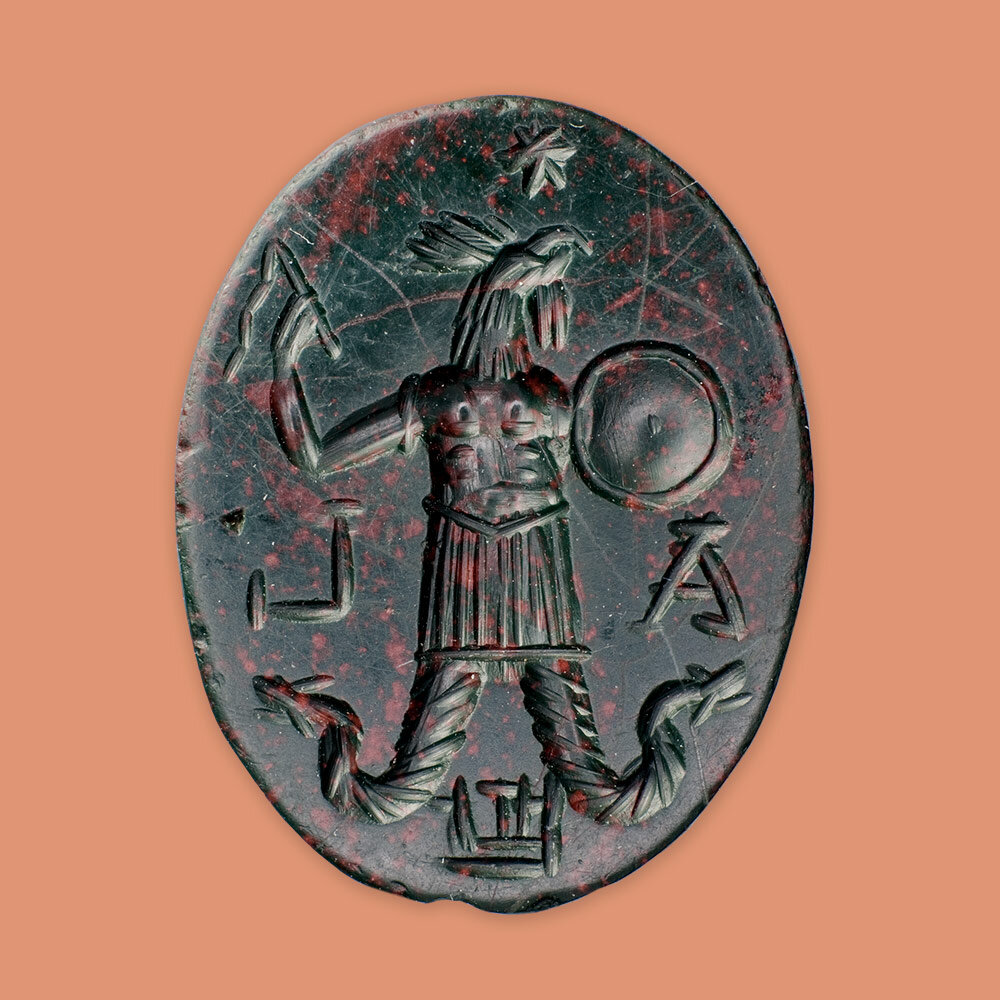
Magic
Abraxas, so-called magic gem, deity with cock’s head, serpent’s tail, body clad in armour bearing a whip and a shield, 3rd century
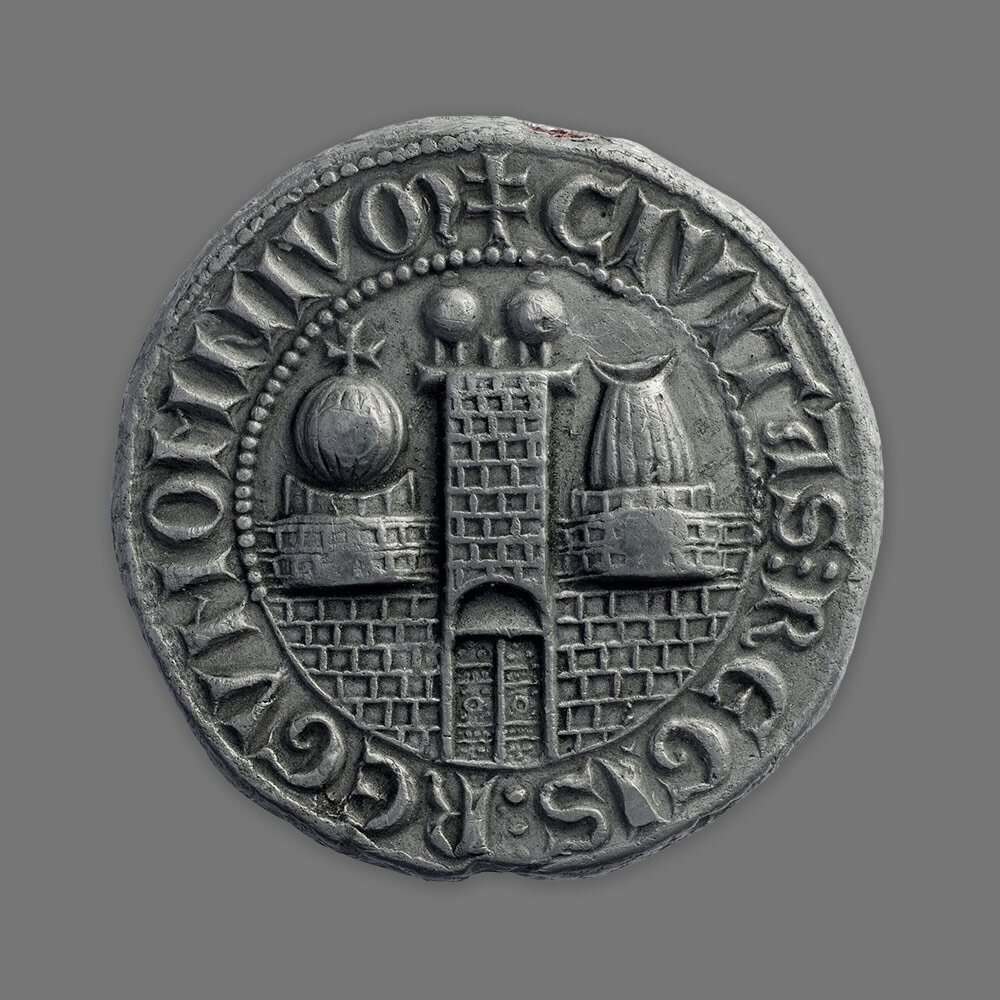
Image of Jerusalem
Lead seal of the crusader king John of Brienne, 1210-1225

Shelter and benediction
Pilgrimage medal from Ettal Abbey, gilt-plated brass in silver setting, 18th century

High-flying plans (obverse)
Alexander II, annual papal medal by Gaspare Morone, 1661

High-flying plans (reverse)
The so called third wing of St. Peter’s Square that was never realised, shown on Bernini’s construction plan
In the centre of the Munich Residenz under the clock tower
Distributed over four halls, the museum presents its visitors with medals and gemstones, ancient coins, medieval and contemporary coins as well as temporary exhibitions.
